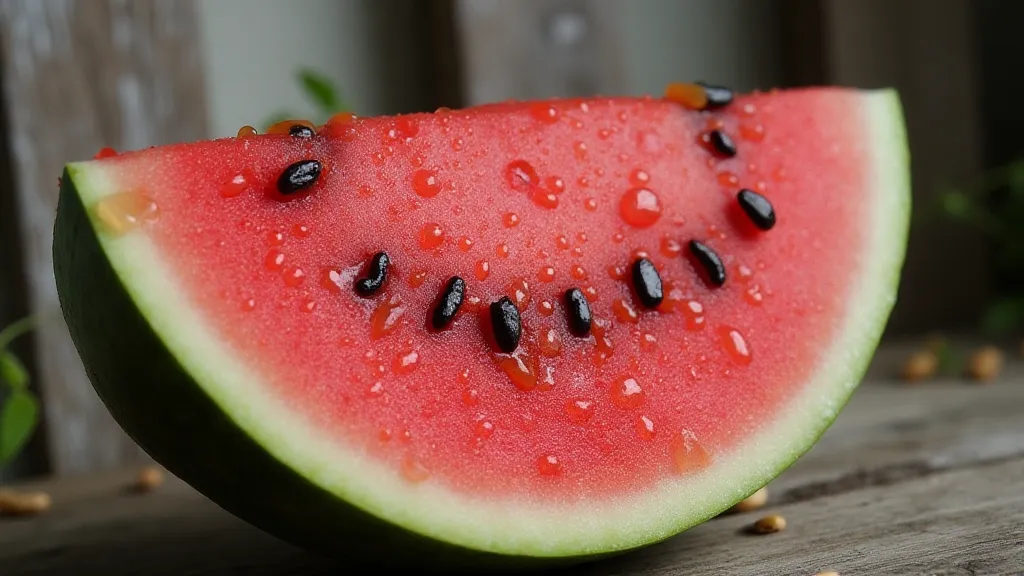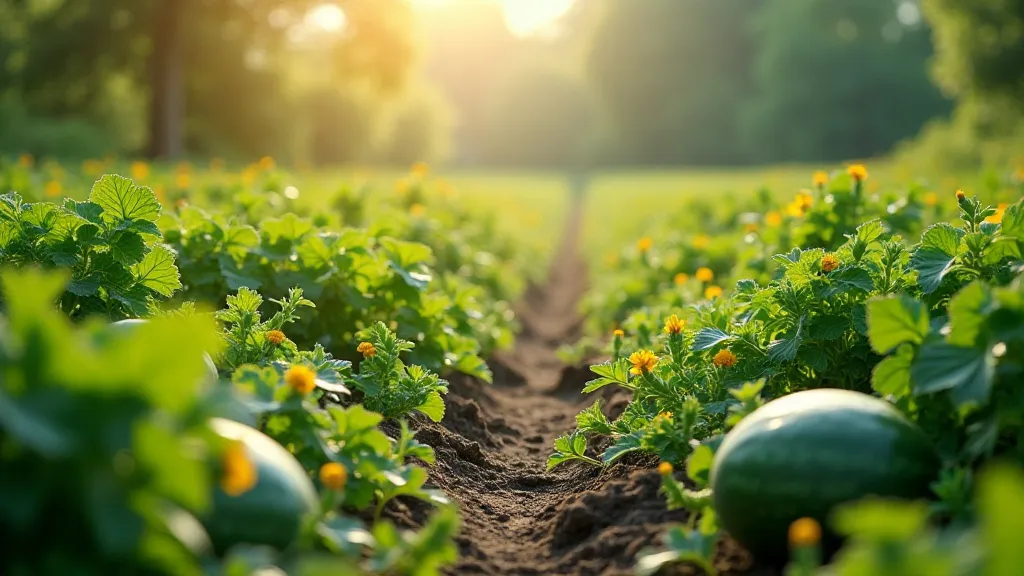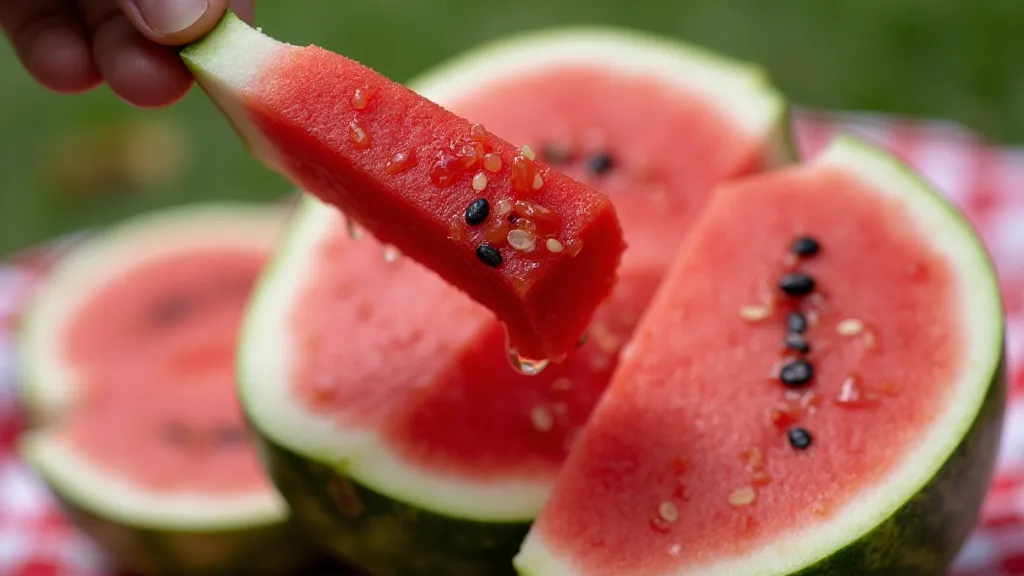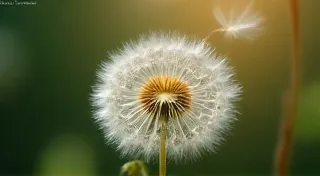The Verdant Alchemy: Transmuting Sunlight into Watermelon Sweetness
There's a certain magic to heirloom watermelons. Not just the delightful crunch of their crimson flesh, nor the way their scent fills a summer afternoon, but the sheer weight of history they carry. It's a history intertwined with the evolution of agriculture, the quiet persistence of families saving seeds across generations, and a deep connection to a simpler, more deliberate way of growing food. Like a perfectly restored antique accordion, each heirloom watermelon tells a story—a tale of careful craftsmanship, enduring quality, and a legacy preserved.
I remember as a child, visiting my grandfather's farm. He grew a variety called 'Black Diamond' – a watermelon so dark, it seemed to absorb the sunlight. It wasn't the uniform red of the supermarket watermelons we'd occasionally have. This was a watermelon of character, of nuance. The sweetness wasn't uniform either; it pulsed with varying intensities, a testament to the peculiarities of the soil, the microclimate of his small patch, and the inherent variability within the heirloom seed itself. He’s gone now, but the memory of that watermelon, and his quiet reverence for it, remains a core piece of my understanding of what it means to truly connect with your food.

The Science of Sweetness: Photosynthesis and the Watermelon's Journey
The sweetness we savor in an heirloom watermelon isn’t simply a given; it’s the result of a remarkable process—photosynthesis. Think of a watermelon vine as a miniature, incredibly efficient solar panel. Leaves absorb sunlight, and through a complex series of chemical reactions involving water, carbon dioxide, and chlorophyll, they convert that energy into sugars. Primarily, this is sucrose, fructose, and glucose, the very building blocks of watermelon sweetness. The more efficiently this process occurs, the more sugars are produced and stored within the fruit. Factors like sunlight intensity, water availability, and soil nutrient levels all play a crucial role in maximizing this photosynthetic “alchemy.”
Unlike modern hybrid watermelons, which are often bred for uniformity, shelf life, and visual appeal, heirloom varieties haven’t undergone the same level of manipulation. While hybrid seeds offer some benefits (disease resistance, sometimes faster growth), they also often come with a trade-off: a potential reduction in flavor complexity and nutritional value. Heirlooms, on the other hand, have retained their genetic diversity, meaning they’re more likely to express unique flavor profiles and adapt to specific growing conditions—just like an antique accordion, crafted with specific materials and techniques to produce a particular sound.
A Legacy of Seeds: Preserving Heirloom Watermelon Varieties
The term "heirloom" isn’t officially defined, but generally refers to varieties that have been passed down for generations – usually at least 100 years. These seeds weren't developed in a laboratory; they were carefully saved, shared, and adapted by families and communities. Many were developed by enslaved people, offering a poignant connection to a heritage of resilience and innovation. Varieties like 'Spears' watermelon, originating from the South, were crucial crops for many families, and their seeds became treasured possessions.
Consider the effort involved in preserving these seeds. It wasn’t about maximizing yield at any cost; it was about maintaining a vital link to the past. Each saved seed carried within it the embodied knowledge of generations—knowledge of soil types, microclimates, and the subtle nuances of watermelon cultivation. Just as a skilled restorer approaches an antique accordion, meticulously preserving its original mechanics and tonal qualities, these seed savers guarded their varieties with a deep sense of responsibility.
Growing Your Own Heirloom Watermelon: A Step-by-Step Guide
Cultivating heirloom watermelons requires a bit more care and attention than growing modern varieties, but the rewards are well worth the effort. Here's a simple guide to get you started:
- Starting Seeds: Watermelons are warm-season crops, so start seeds indoors 3-4 weeks before the last expected frost. Use peat pots or biodegradable containers, as watermelons don't like having their roots disturbed.
- Soil Preparation: Watermelons thrive in well-drained, sandy loam soil with a pH between 6.0 and 6.8. Amend the soil with plenty of compost or well-rotted manure.
- Planting Outdoors: Once the risk of frost has passed and the soil has warmed, transplant the seedlings outdoors. Space plants 3-4 feet apart to allow for ample growth.
- Watering: Watermelons need consistent moisture, especially during fruit development. Deep, infrequent watering is better than frequent, shallow watering.
- Fertilizing: Feed your watermelons with a balanced fertilizer every 2-3 weeks during the growing season.
- Pollination: Watermelons require pollination to set fruit. If you notice a lack of bees in your area, consider hand-pollinating the flowers.
- Pest and Disease Control: Monitor your plants regularly for signs of pests or diseases. Use organic pest control methods whenever possible.

Choosing Your Variety: A Taste of History
The world of heirloom watermelons is incredibly diverse. Some popular choices include:
- 'Black Diamond': Deeply colored, intensely sweet, and incredibly juicy.
- 'Spears': A Southern favorite known for its sweet, crisp flesh and beautiful speckled rind.
- 'Moon and Stars': A visually stunning variety with dark green rind covered in yellow "stars."
- 'Charleston Grey': A classic Southern watermelon with a distinctive gray rind and sweet, crisp flesh.
- 'Arkansas Black': An heirloom from the Ozark region, with a dark, almost black rind and exceptional sweetness.
Experimenting with different varieties is part of the fun! Like an accordion collector searching for a rare model with a unique tone, you might discover a watermelon that perfectly suits your taste and growing conditions.
The Sweet Reward: Harvesting and Enjoying Your Heirloom Watermelon
Knowing when to harvest is crucial. Look for a deep, consistent yellow spot on the underside of the melon where it rests on the ground. The tendril closest to the melon should be dried and brittle. A hollow sound when thumped gently can also indicate ripeness. Remember, just as restoring an antique accordion requires patience and expertise, growing heirloom watermelons is a labor of love.
Biting into a perfectly ripe heirloom watermelon – savoring that burst of sweetness, that satisfying crunch – is a reward unlike any other. It's a connection to the past, a celebration of tradition, and a testament to the enduring power of nature's alchemy. It's a taste of sunlight, water, and the careful stewardship of generations—a truly extraordinary experience.






